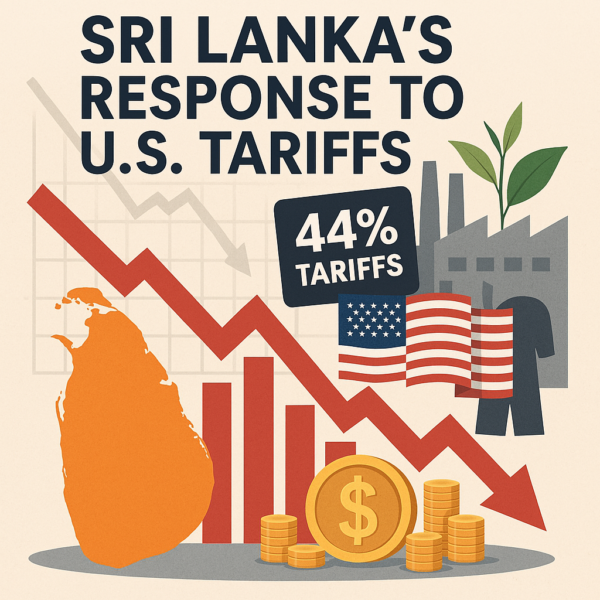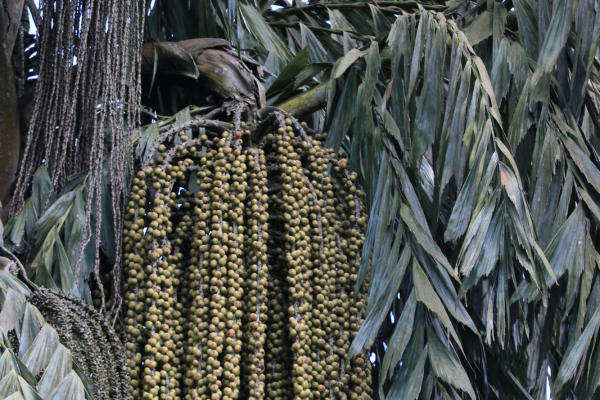Sri Lanka’s Response to U.S. Tariffs: Navigating Economic Turbulence. – By Dr Harold Gunatillake


Hello Readers,
It’s truly disheartening to see our country facing such challenges, especially as we strive to bounce back from the harsh economic times we’ve endured.
Sri Lanka faces a pivotal challenge as the United States imposes a 44% tariff on its exports, potentially resulting in an annual revenue loss of $3 billion. This tariff primarily impacts the apparel and tea industries, undermining a significant portion of Sri Lanka’s economic lifeline.
The United States has long been Sri Lanka’s most significant export destination, accounting for 23% of the country’s total merchandise exports in 2024. Of nearly 3 billion in exports to the U.S. last year, the vast majority—over 70%—came from the apparel sector.
These include men’s and women’s undergarments, outerwear, T- shirts, sportswear, gloves, and baby garments.
Prominent figures in the industry and economic analysts caution that the significant tariff may yield profound repercussions for Sri Lanka’s already vulnerable economy. The implementation of the new 44% levy puts Sri Lankan garments at risk of losing competitiveness in the U.S. market, potentially leading to a significant decline in orders. Such a scenario would likely result in a contraction of apparel export revenues and jeopardise thousands of jobs within one of Sri Lanka’s most essential sectors.
In this article, we explore potential strategies for policymakers and economists to counteract this crisis.
The good news is that we’re projecting a 5% growth in 2024, the highest growth since 2014, which gives us hope for a brighter future.
GDP at Constant Prices: The GDP for 2024 at constant prices (2015) increased to Rs. 12,472.469 billion, up from Rs. 11,877.556 billion in 2023.
Sector Performance: All three sectors of the economy— agriculture, industry, and services—made positive contributions to growth.
Q4 Growth: The economy expanded by 5.4% in the fourth quarter of 2024.
Industry and Services: Industry led the 4Q GDP growth, expanding by 13.1%, while services grew by 2.5%.
Agriculture: The agricultural sector contracted by 2.2% in the fourth quarter, reflecting year-end troubles in the industry.
Per Capita Income: The per capita income increased to US$4,516 in 2024.
In dollar terms, the GDP growth totalled USD 4.21 billion.
The economic repercussions resulting from the abrupt increase in tariffs have a cascading effect on our economy.
Employment Risks: Many individuals working in the export sector face potential job losses, which could significantly impact their livelihoods and the broader community’s well-being.
Employment Risks: Thousands of workers in the export sector face potential job losses, exacerbating socioeconomic concerns.
Currency Stability: A decrease in foreign exchange inflows may create challenges for the Sri Lankan Rupee, potentially deepening the country’s balance-of-payments situation.
What steps can we propose to recover from this issue?
The recent imposition of U.S. tariffs, including a substantial 44% levy on certain Sri Lankan exports, has prompted significant concern.
As one of Sri Lanka’s largest trading partners, the U.S. plays a critical role in the country’s economy. This article explores the impact of these tariffs on Sri Lanka’s key sectors, the government’s strategic responses, and potential pathways to mitigate economic challenges.
The apparel industry, which accounts for a significant portion of Sri Lanka’s exports to the U.S., is one of the hardest-hit sectors.
Additionally, industries such as the glove and activated carbon sectors are also grappling with the repercussions of these tariffs. Experts predict that these measures could result in revenue loss and job cuts, particularly affecting vulnerable groups that depend on these industries for their livelihoods.
Diversifying Export Markets
Sri Lanka has the potential to diminish its dependence on the United States market by fortifying trade relations with emerging markets, including India, the ASEAN nations, and various countries in Africa. By leveraging existing free trade agreements and exploring new partnerships, opportunities for alternative revenue streams can be cultivated.
Boosting Domestic Competitiveness
The government should allocate resources towards technological advancements and skills development to enhance production efficiency. Reducing expenses for vital industries, such as apparel, may serve to mitigate the repercussions of tariffs.
Regional Cooperation: Collaborating with South Asia on regional trade strategies can enhance the collective bargaining power of countries affected by similar policies.
Diplomatic Efforts
Diplomacy plays a vital role in our progress. A dedicated team of economists, diplomats, and trade specialists could work together to negotiate meaningful tariff reductions with U.S. policymakers.
Emphasising the shared benefits of fair-trade practices could influence the discussions positively for Sri Lanka.
A high-level delegation is scheduled to visit Washington, D.C., in May to negotiate potential relief measures with U.S. trade officials. Diplomacy remains a cornerstone of Sri Lanka’s foreign policy.
President Anura Kumara Dissanayake has established a committee to assess the economic implications of the tariffs and recommend actionable strategies. This committee is composed of influential individuals, including the Secretary to the Ministry of Finance, the Governor of the Central Bank, as well as representatives from the Export Development Board and the Board of Investment.
Deputy Minister of Foreign Affairs & Foreign Employment Arun Hemachandra has assured the public that the government is taking a thoughtful and steady approach to safeguard the economy. He emphasised the importance of collaborating with international partners and protecting the interests of exporters and workers.
Focus on Diversification is an option.
The government is exploring strategies to diversify export markets and reduce reliance on the U.S. This includes strengthening trade ties with other countries in Asia and Europe to mitigate the impact of the tariffs.
The Central Bank of Sri Lanka is closely monitoring the situation to assess the potential long-term impact of the tariffs on the economy. Although we’re still assessing the immediate effects, officials recognise the importance of taking proactive steps to ensure a stable economic environment.
Diversifying export markets is a top priority. The government is strengthening trade ties with Asia and Europe to reduce reliance on the U.S. This diversification strategy is seen as a key measure to build resilience.
Looking ahead, Sri Lanka is emphasising the need for an Asia- centric trade strategy to foster regional growth and cooperation. Moreover, creating an investor-friendly environment is pivotal to attracting foreign investments. By diversifying exports and increasing global competitiveness, the nation can better prepare for future economic disruptions.
Conclusion
While the U.S. tariffs have posed significant challenges, Sri Lanka’s strategic responses highlight a commitment to mitigating the economic impact. By combining diplomacy, domestic initiatives, and diversification, the government aims to navigate these challenges and safeguard the nation’s financial stability.
Let’s hope for the best!
End





















